B2B Marketing has changed - forever. The B2B buyer is savvy, informed, digitally native, educated, hard to reach, part of a wider buying committee, etc. Fortunately, Account-based Marketing can help address this targeting and communication challenge.
Just as the B2B Marketer has changed over the course of the last few years, so has Account-based Marketing.
From its origins in 2003, ABM has evolved from the ‘pure’ One-to-one ABM approach to encompass One-to-few and One-to-many.
At the same time, technology has impacted many aspects of ABM from intent data to programmatic advertising.
ABM is evolving.
The impact of Account-based Marketing is being felt throughout organizations.
ABM is much more than Marketing. Much more than Sales.
It’s a strategic pivot. It’s a company-wide initiative.
This is where ABX comes in. Account-based Experience.
In the latest episode of Let’s talk ABM, I spoke to Amber Bogie, award-winning ABM Strategy Lead at Degreed, about the evolution of ABM to ABX, plus how businesses can strive for a more account-centric approach.
In the interview (full recording here), we discussed:
- How Sales Enablement unlocks ABM
- Why Degreed is evolving from ABM to ABX
- How Degreed measures the ROI of its ABM program
- Advice on how to succeed at Account-based Marketing
So let’s take a look at some of Amber’s top tips:
8 steps to building an account-centric organization
1. Take a two-fold approach when building out your ABM strategy
ABM will look different to every organization - especially at the pilot stage.
After all, how you decide to implement the strategy will hugely depend on why you’re implementing the strategy.
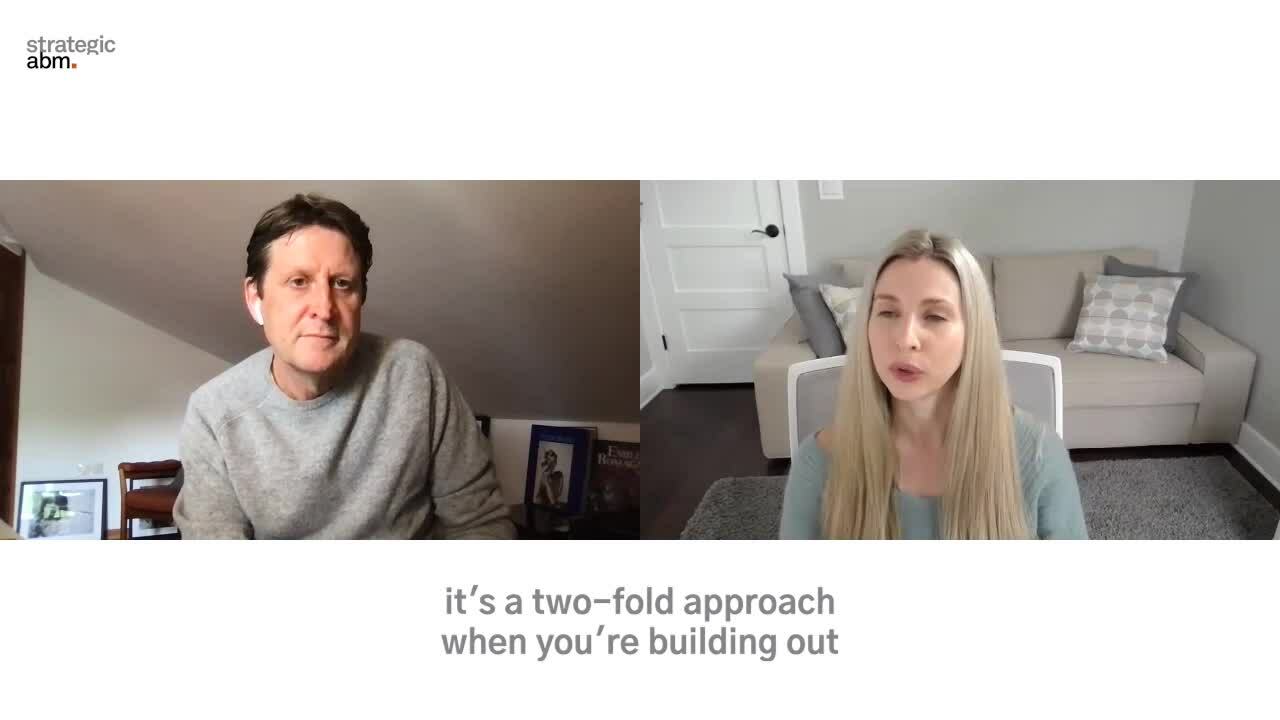
But as a general rule, you should be looking to set the foundations in place before you start executing the program.
This means ensuring you have the supporting tech stack you need, having the right employees in the right roles, and ensuring you have the internal buy-in that’s needed to get the program off the ground.
“First, you're identifying the strategy within ABM, which one works best for your organization. And then the two-fold is building the foundation of it and then actually getting programs started.” - Amber Bogie, ABM Strategy Lead at Degreed
Once you have those foundations in place, you can then start the execution of the program.
“I'd say within the two months, we had campaigns running, but I wouldn't call that meeting the strategy, like, the ABM strategy by any means. I'd say it was around maybe six, closer to the six month mark that I believe that we really had a fully baked strategy that started” - Amber Bogie, ABM Strategy Lead at Degreed
2. Consider making changes over time
A common misconception when it comes to ABM is that you have to completely revamp your organization and your current marketing efforts.
But this isn’t always the case.
In fact, your organization will probably adapt a lot more smoothly if you make the necessary changes to your current strategy over time.

This also gives you the opportunity to make changes to your strategy according to performance, which in the long run will greatly increase your chances of ABM success. After all, what works for one company doesn’t always work for another.
The main focus of your organization when it comes to ABM should be the account.
That means the Demand Gen team, the Events team, the Sales and Marketing teams - every department in the organization should have an account-centric mindset and be targeting the ICP.
“It's a hard pill to swallow to change, to make the change. But it doesn't have to be. It doesn't have to be a complete revamp. It can also be something that you change over time” - Amber Bogie, ABM Strategy Lead at Degreed
All the finer, more intricate details of ABM can be stitched into the process as you go, so long as you have the main body of the process in place.
3. Focus on educating and training your team
Believe it or not, ABM alone is not enough to give you the status of an account-centric organization.
You need to live and breathe account-based. That means adapting your organization’s attitude towards Marketing, Sales and every other process in between so that everything always comes back to the account.
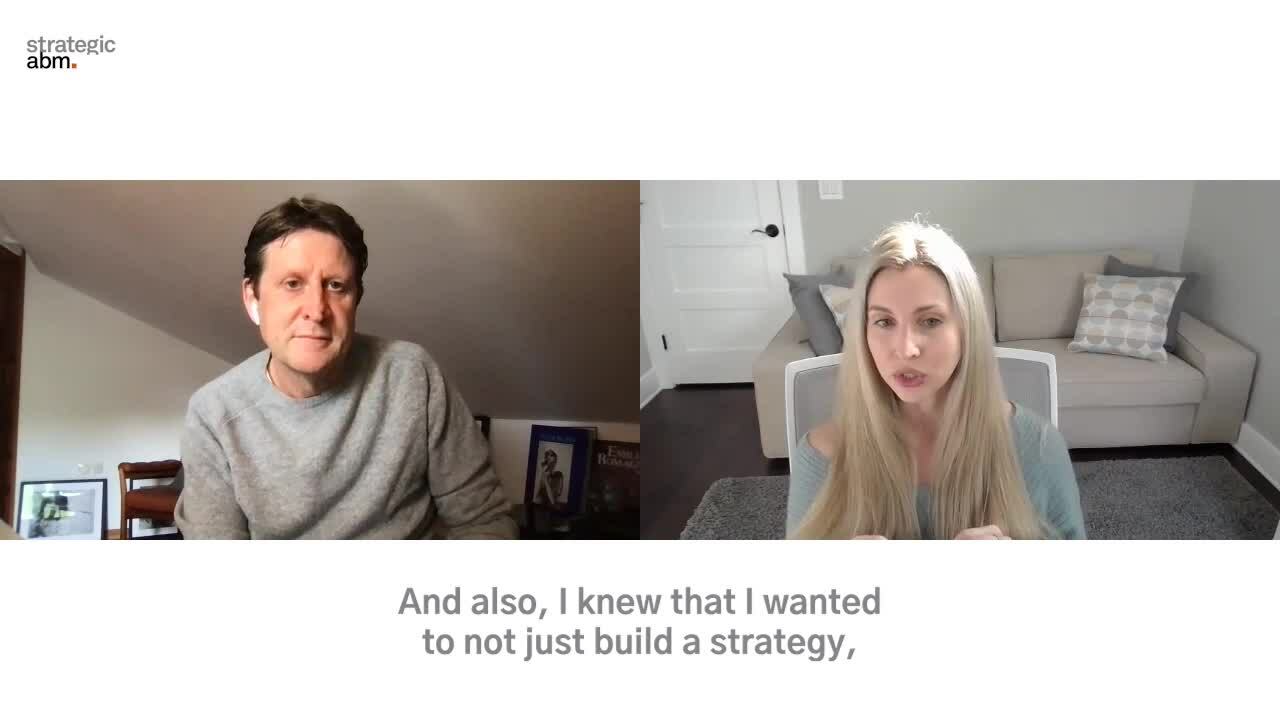
And if you want to get the best from your teams, this is going to take some additional education and training.
You can’t make changes to your organization and expect your teams to just go along with it.
If you want their buy in (and you do!), then they need to understand the value behind an account-centric business.
“I feel like I should have a list of, like, the hardest part of ABM, 'cause there's a few of them, but this is one of them that goes on the list of that's the hardest part. But it really is a challenge to try and explain a strategy that's not starkly different from what salespeople are really already doing” - Amber Bogie, ABM Strategy Lead at Degreed
What is account-based?
How is this different from what they’ve been doing up until now? How is this new model going to change the overall process? And what’s in it for them?
These are some of the questions you need to be answering to ensure you get the wider buy-in within your organization.
You may find that your processes don’t need to change drastically, and that’s fine! But make sure to highlight what does need changing, how, and why.
4. The data matters - but you also need buy-in from Sales
A key aspect of successful ABM is knowing your data.
Constantly reviewing, acknowledging and adjusting your processes to maximize impact.
But data isn’t everything.
As important as the data is in informing your strategy, so is the opinion and input from your experts. And in this case, the experts are your salespeople.
After all, who better to give input and advice on the best accounts to engage with, than the ones who are actively communicating with them?
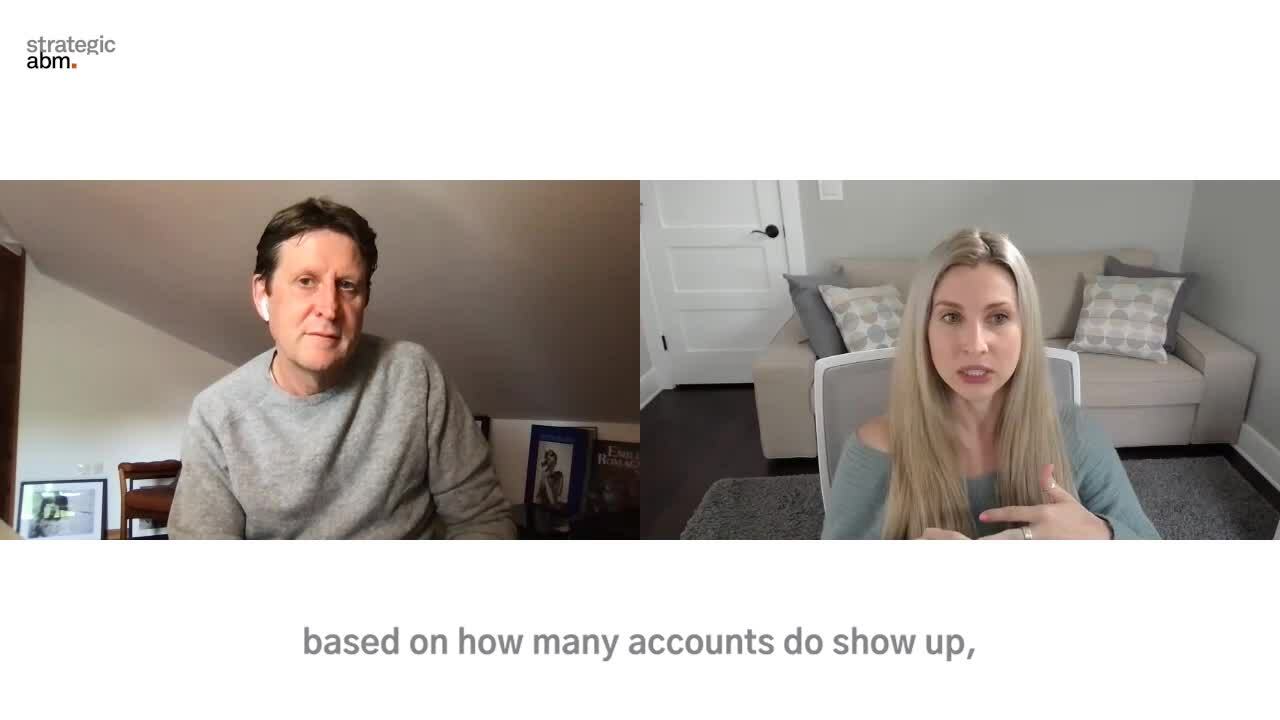
Think of data as your Step One.
It tells a story, it informs who you should be targeting - but it doesn’t tell everything. And if your salespeople aren’t engaged and interested with that account, they aren’t going to give it their all.
“For me, it really comes down to: the data matters. We need the data, without question. It is very important. But you can have the gold star, absolute best accounts based on your data. And if your salesperson does not feel bought into that account for a reason that you might not know, because data doesn't tell all the story, you're not going to get them to focus on that account. And that's where the buck stops” - Amber Bogie, ABM Strategy Lead at Degreed
So once you’ve completed step one, and you have a list of accounts that fit your organization according to the data, get your salespeople involved to whittle the list down.
Get their input and their expertise to inform the final decision - because that’s how you’ll get the most out of your Sales team. By bringing them into the decision-making process.
5. Start to move towards ABX
ABM is not a new phenomenon.
It has become increasingly popular in the world of B2B since Bev Burgess initially coined the term back in 2003. But is the term evolving?
Despite what the name might suggest, ABM is not all about Marketing. And that’s why many ABMers, including Amber Bogie, are turning to ABX - the Account-based Experience.

ABX is like ABM v.2.0. You’ve set up the foundations, decided on a suitable process, and are executing that process across the organization to create a hyper-personalized, account-centric experience.
It’s less about the Marketing and more about the account - what can each department be doing to contribute towards engaging with these accounts?
“It is less of a conversation about, what are we doing for ABM? It's, this is what we're doing for top of funnel. This is what we're doing for middle funnel. This is what we're doing bottom of funnel. This is what the Customer team's doing, Events team, and then they're all around focus target accounts” - Amber Bogie, ABM Strategy Lead at Degreed
6. Invest in sales enablement
At the end of the day, ABM is all about giving your Sales team the best possible chance of closing a deal with your target account. It’s more or less a form of sales enablement.
Now, that’s not to say that everything about ABM comes down to Sales. It doesn’t.
But ultimately the end goal of any ABM campaign is to win, grow, and retain the account.
And that’s why it’s essential that your Sales team have access to the insight needed to do this effectively.
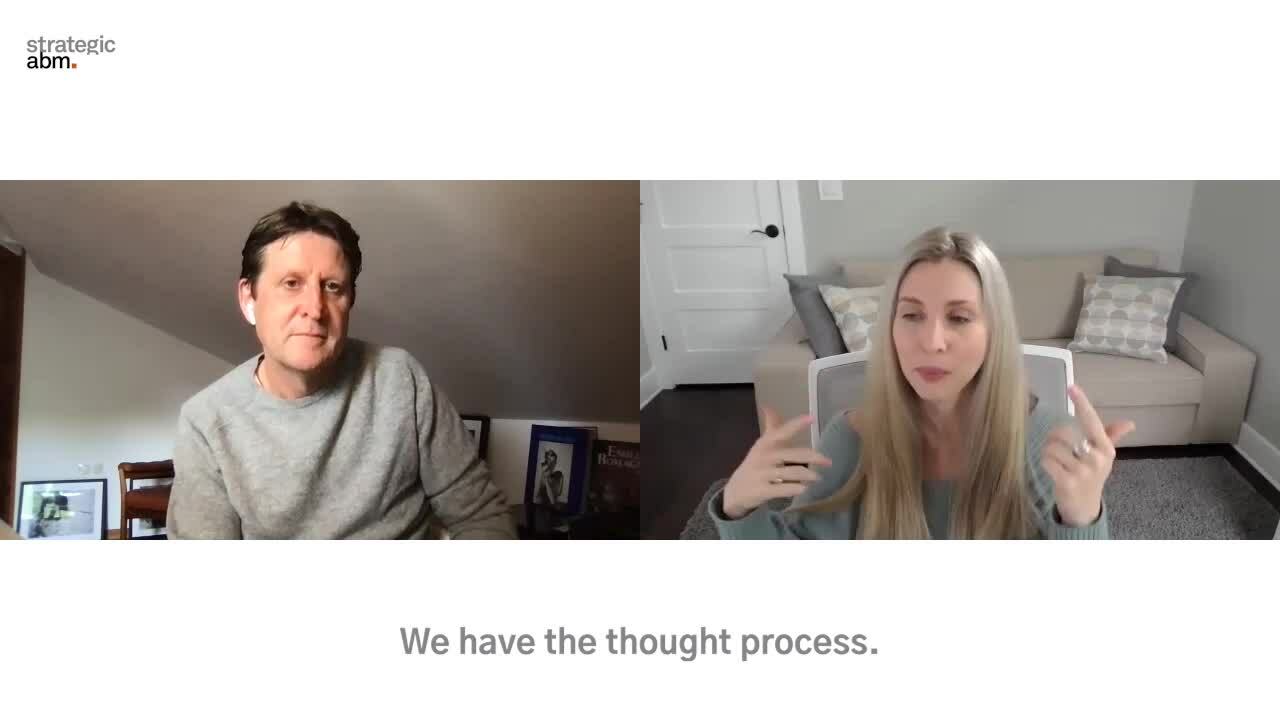
As Marketers, we know how to run a campaign. We know how to create content that engages with certain audiences, and we know how to improve our strategies according to the data.
But what we need to focus more on, is how to support Sales.
“The part that we need to be better at is supporting how Sales works, communicating in a way that works for them, thinking about the processes, because we could hand off a million MQAs, and we can help get so many meetings, but what happens after the meeting? The whole sales cycle. And that's the part that gets the deal done” - Amber Bogie, ABM Strategy Lead at Degreed
This means providing your Sales team with the content, tools, insights, data and even people they need to do their jobs effectively and efficiently.
At the end of the day, you can have the best campaign strategy to ever exist, but if your Sales team doesn't feel supported and motivated, then you won’t close any deals.
7. "Look at the data, look at the data, look at the data!”
The key to successful ABM lies in regularly reviewing your metrics and your data.
That doesn’t mean checking in on your performance once a year and then doing a huge U-turn when you realize that what you’ve been doing isn’t producing results.
You want to be reviewing your performance on an almost weekly basis, discussing with your teams where you’re seeing improvement, where you’re hitting hurdles, and what simply isn’t working.
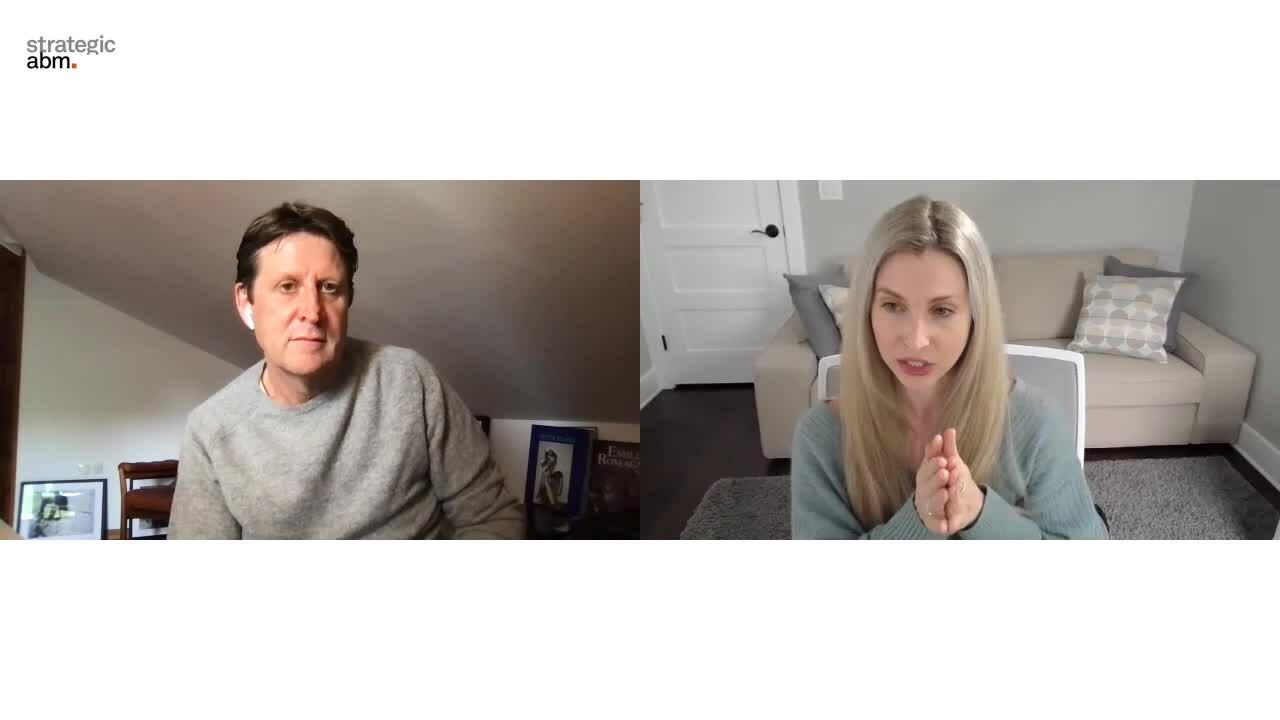
This is where you can begin to highlight areas that need improvement. Maybe engagement is pretty low. Or maybe, engagement is high but that follow-through isn’t sufficient enough, and you’re not filtering those accounts down through the funnel.
With insight into this kind of data, you can get a really well-rounded view of the bigger picture and how your overall ABM efforts are performing.
“In terms of attribution, if it's an ABM account, and it's seeing success, I'm attributing that to a company-wide effort of focusing on the right accounts using an ABM strategy” - Amber Bogie, ABM Strategy Lead at Degreed
8. Bring in people with ABM experience
If you’re new to ABM, the whole experience will be a huge learning curve.
You will inevitably test out a strategy and quickly find it isn’t as effective as you thought it would be, and this will happen countless times before you get it right.
But once you get it right, you’ll never go back to standard B2B Marketing.

So what’s one thing you can do to make the process a little smoother?
Consider bringing someone experienced in ABM into your team.
Of course, this won’t erase the pains and the challenges of implementing ABM in your organization, but having that experience there will help guide you and support your long-term efforts.
“In terms of a company that's looking to have an ABM strategy implemented to build a new strategy, my advice for them is 100% to bring somebody in who has the experience. I think that you'll be set up for more success” - Amber Bogie, ABM Strategy Lead at Degreed
And remember that ABM looks different for every organization. There’s not a one-size-fits-all approach, so you need to decipher what works for your business and your overarching goals.
You can learn more about all things Account-based in our Let’s talk ABM webinar series, which is now also available on our podcast for all the latest ABM insights on-the-go!






